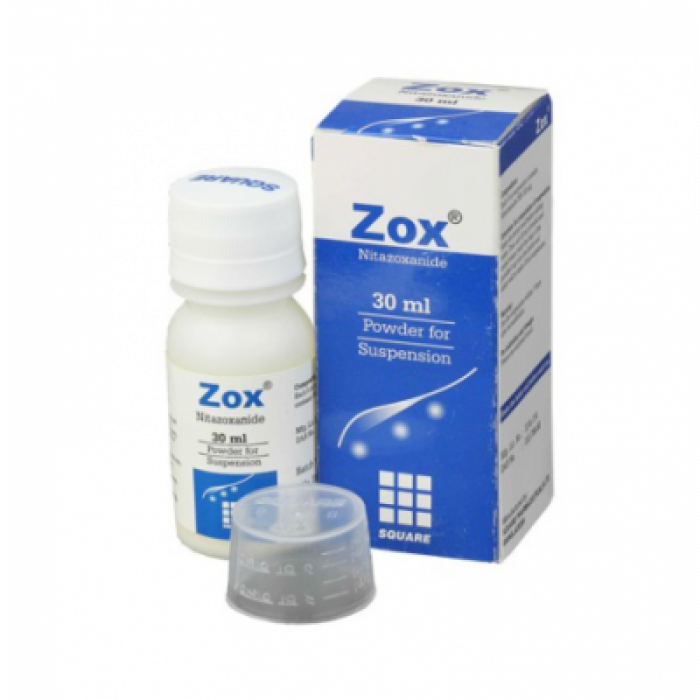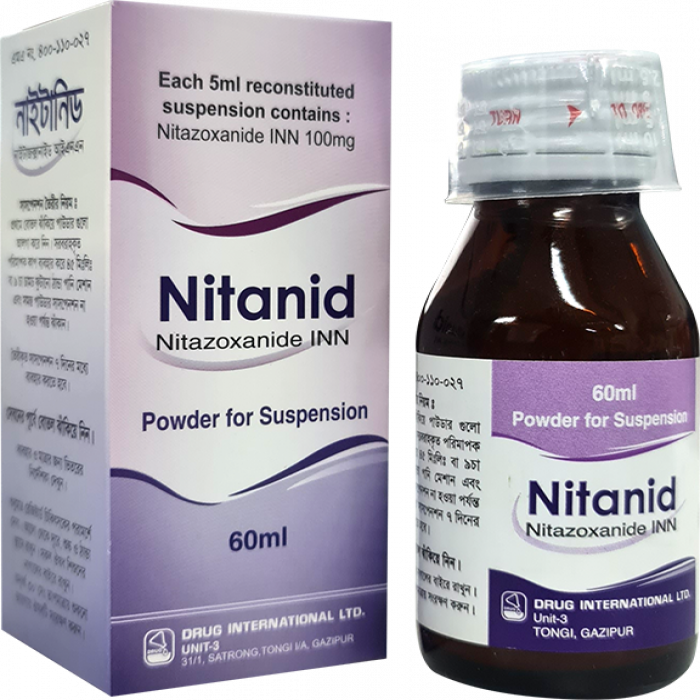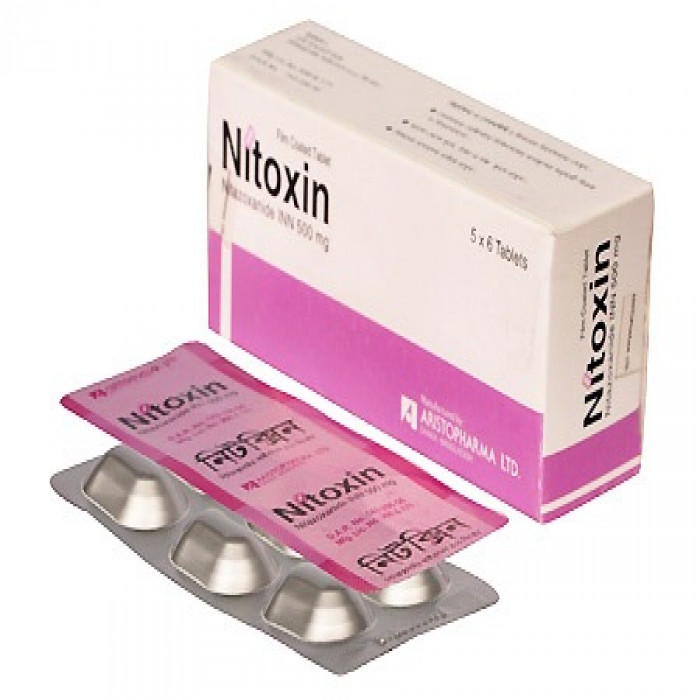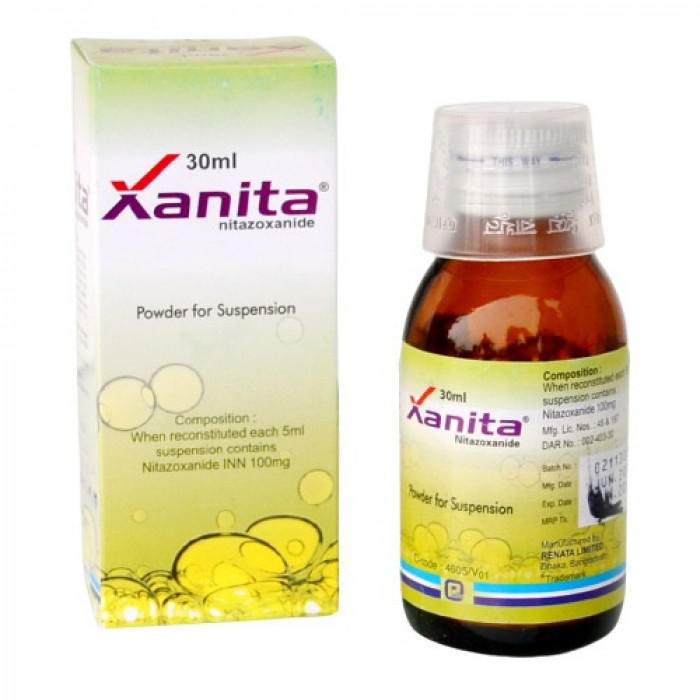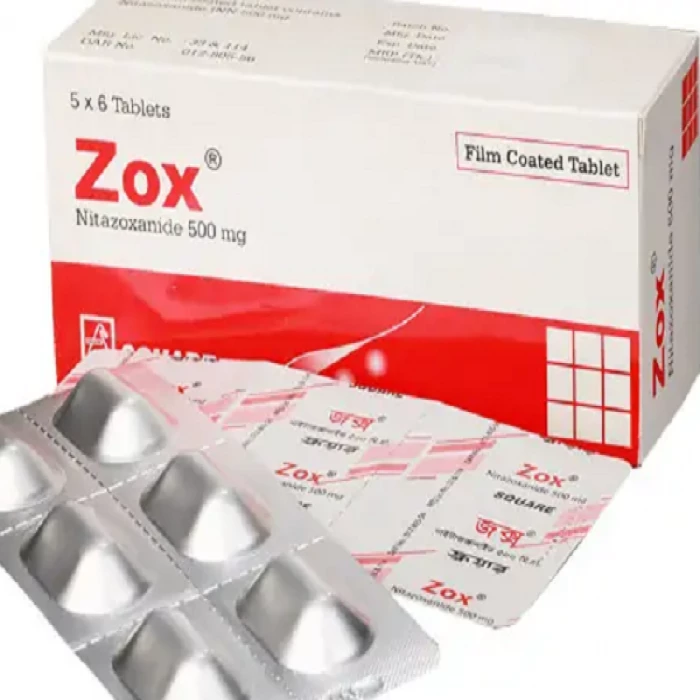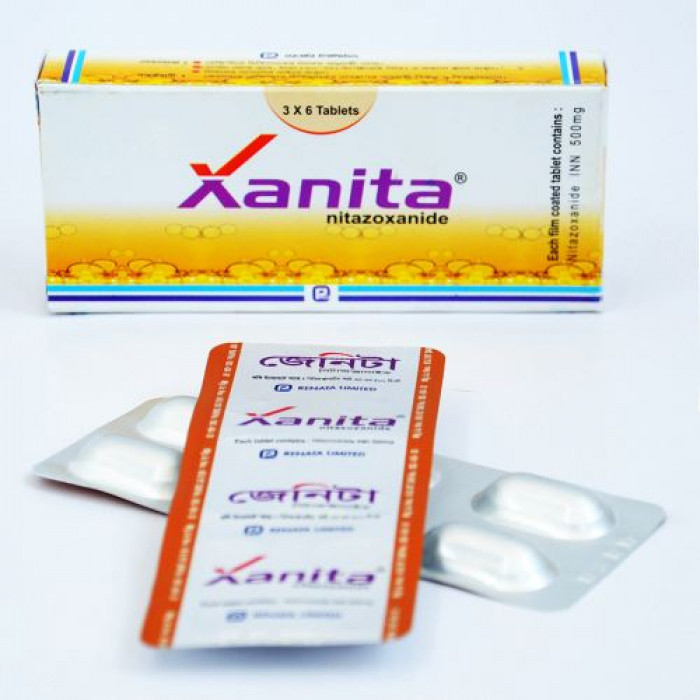
✔ 100% Authentic Product
👁️ Currently Viewing 1932
Tablet, Generic Name: Nitazoxanide 500 mg
Nitazoxanide is indicated in diarrhoea caused by Cryptosporidium parvum and Giardia lamblia, Amebiasis and helminth infections.
Discount
Price: ৳ 57
MRP:
৳
60.42
6%
Off

100% Genuine Products, Guaranteed

Safe & Secure Payments, Always

Fast, Secure & Efficient Delivery

Proper Packaging
 Cash on Delivery - All over Bangladesh
Cash on Delivery - All over Bangladesh Regular Delivery - 12-24 Hours, Dhaka City* Charge Tk.39-59
Regular Delivery - 12-24 Hours, Dhaka City* Charge Tk.39-59 Regular Delivery - 24-48 Hours, Other Cities* Charge Tk.99-110
Regular Delivery - 24-48 Hours, Other Cities* Charge Tk.99-110
 ফ্রি ডেলিভারিঃ - ৯৯৯ টাকা+ অর্ডারে, ঢাকা
শহরে
ফ্রি ডেলিভারিঃ - ৯৯৯ টাকা+ অর্ডারে, ঢাকা
শহরে ফ্রি ডেলিভারিঃ - ২৯৯৯ টাকা+ অর্ডারে, ঢাকার
বাহিরে
ফ্রি ডেলিভারিঃ - ২৯৯৯ টাকা+ অর্ডারে, ঢাকার
বাহিরে
100% Genuine Products, Guaranteed
Safe & Secure Payments, Always
Fast, Secure & Efficient Delivery
Proper Packaging
 Cash on Delivery - All over Bangladesh
Cash on Delivery - All over Bangladesh Regular Delivery - 12-24 Hours, Dhaka City* Charge Tk.39-59
Regular Delivery - 12-24 Hours, Dhaka City* Charge Tk.39-59 Regular Delivery - 24-48 Hours, Other Cities* Charge Tk.99-110
Regular Delivery - 24-48 Hours, Other Cities* Charge Tk.99-110 ফ্রি ডেলিভারিঃ - ৯৯৯ টাকা+ অর্ডারে, ঢাকা
শহরে
ফ্রি ডেলিভারিঃ - ৯৯৯ টাকা+ অর্ডারে, ঢাকা
শহরে ফ্রি ডেলিভারিঃ - ২৯৯৯ টাকা+ অর্ডারে, ঢাকার
বাহিরে
ফ্রি ডেলিভারিঃ - ২৯৯৯ টাকা+ অর্ডারে, ঢাকার
বাহিরে
✅ Description:
Indications
Nitazoxanide is indicated for the treatment of diarrhea caused by Cryptosporidium parvum, Giardia lamblia and Entamoeba histolytica.
Therapeutic Class
Anti-diarrhoeal Antiprotozoal
Pharmacology
Nitazoxanide is a synthetic antiprotozoal agent for oral administration. The antiprotozoal activity of Nitazoxanide is believed to be interference with the Pyruvate Ferredoxin Oxido Reductase (PFOR) enzyme-dependant electron transfer reaction. This reaction is essential for anaerobic energy metabolism of the protozoa. Nitazoxanide and its metabolites, tizoxanid are active in vitro in inhibiting the growth of sporozoites and oocyst of Cryptosporidium parvum and trophozoites of Giardia lamblia.
Dosage & Administration
Age 1-3 years: 1 tea-spoonfull or 5 ml suspension every 12 hours for 3 days.
Age 4-11 years: 2 tea-spoonfulls or 10 ml suspension every 12 hours for 3 days.
Age 12 years or above: 5 tea-spoonfulls (25 ml) suspension or 1 tablet every 12 hours for 3 days.
It is recommended to be administered with food.
Interaction
It is highly bound to plasma protein. Therefore, caution should be exercised when administering Nitazoxanide concurrently with other highly plasma protein-bound drugs with narrow therapeutic index.
Contraindications
It is contraindicated in patients with known hypersensitivity to Nitazoxanide or any components of the preparation.
Side Effects
The most frequent side effects, reported by Nitazoxanide are abdominal pain, vomiting and headache. These side effects are typically mild and transient in nature. Very rare side effects include- nausea, anorexia, flatulence, increased appetite, enlarged salivary glands, increased creatinine & SGPT level, pruritus, rhinitis, sweating, dizziness, discolored urine etc.
Pregnancy & Lactation
US FDA pregnancy category of Nitazoxanide is B. There are, however, no adequate and well-controlled studies in pregnant women. Because animal reproduction studies are not always predictive of human response, this drug should be used during pregnancy only if clearly needed. Nitazoxanide have been shown to be excreted in human milk. So, caution should be exercised when Nitazoxanide is administered during lactation.
Precautions & Warnings
Nitazoxanide must be administered with caution to patients with hepatic & biliary disease and to patients with renal disease.
Storage Conditions
Keep in a dry place away from light and heat. Keep out of the reach of children.
⚠️Disclaimer:
At ePharma, we’re committed to providing accurate and accessible health information. However, all content is intended for informational purposes only and should not replace medical advice from a qualified physician. Please consult your healthcare provider for personalized guidance. We aim to support, not substitute, the doctor-patient relationship.





